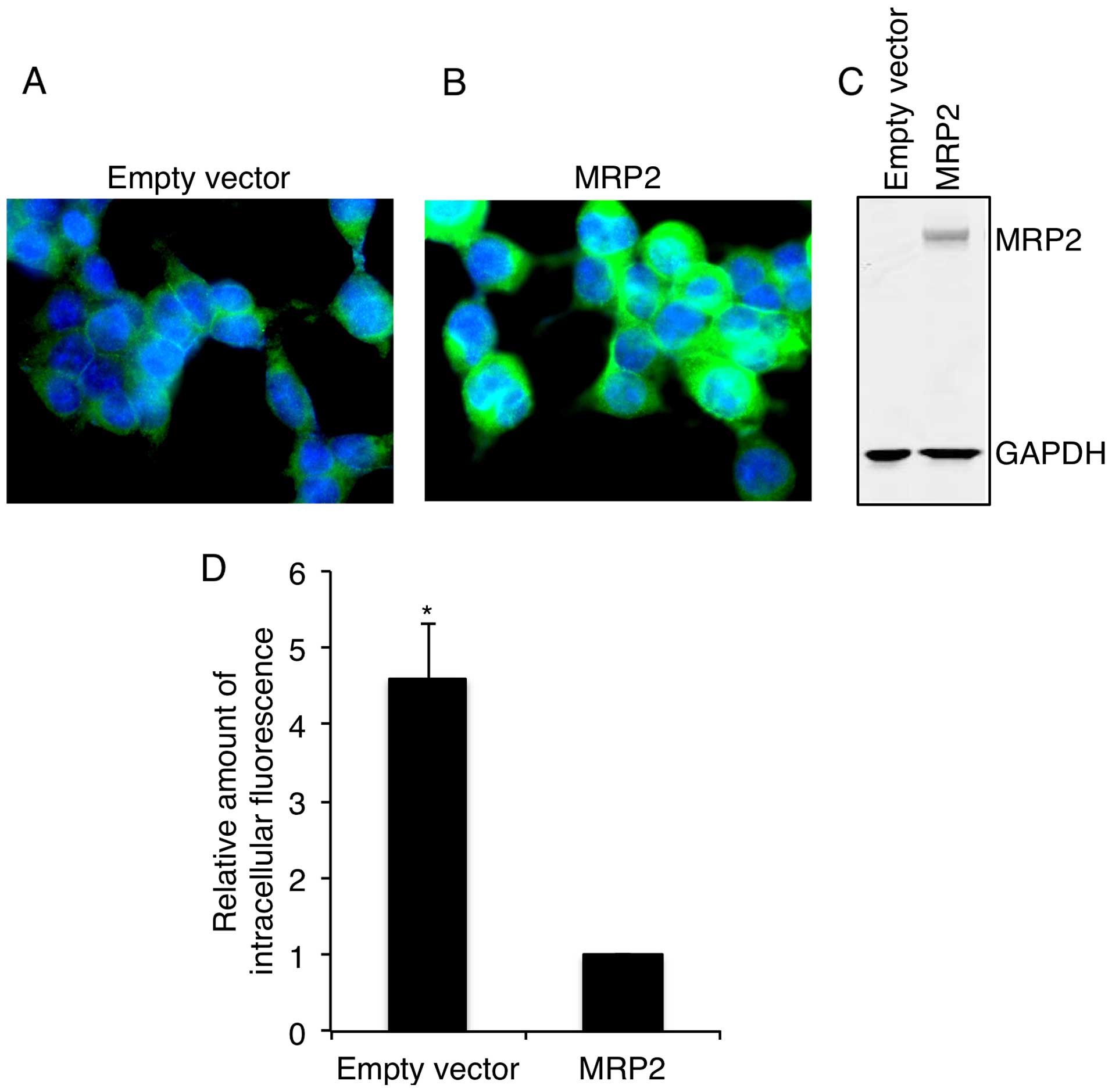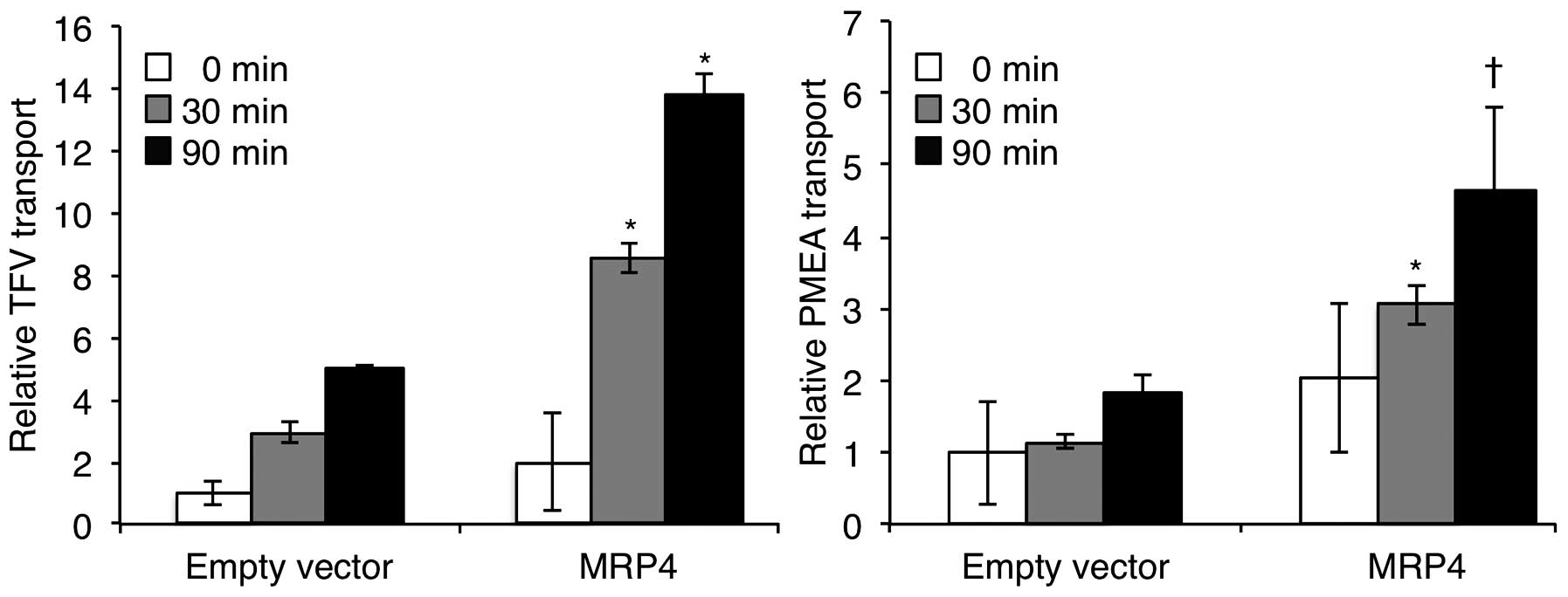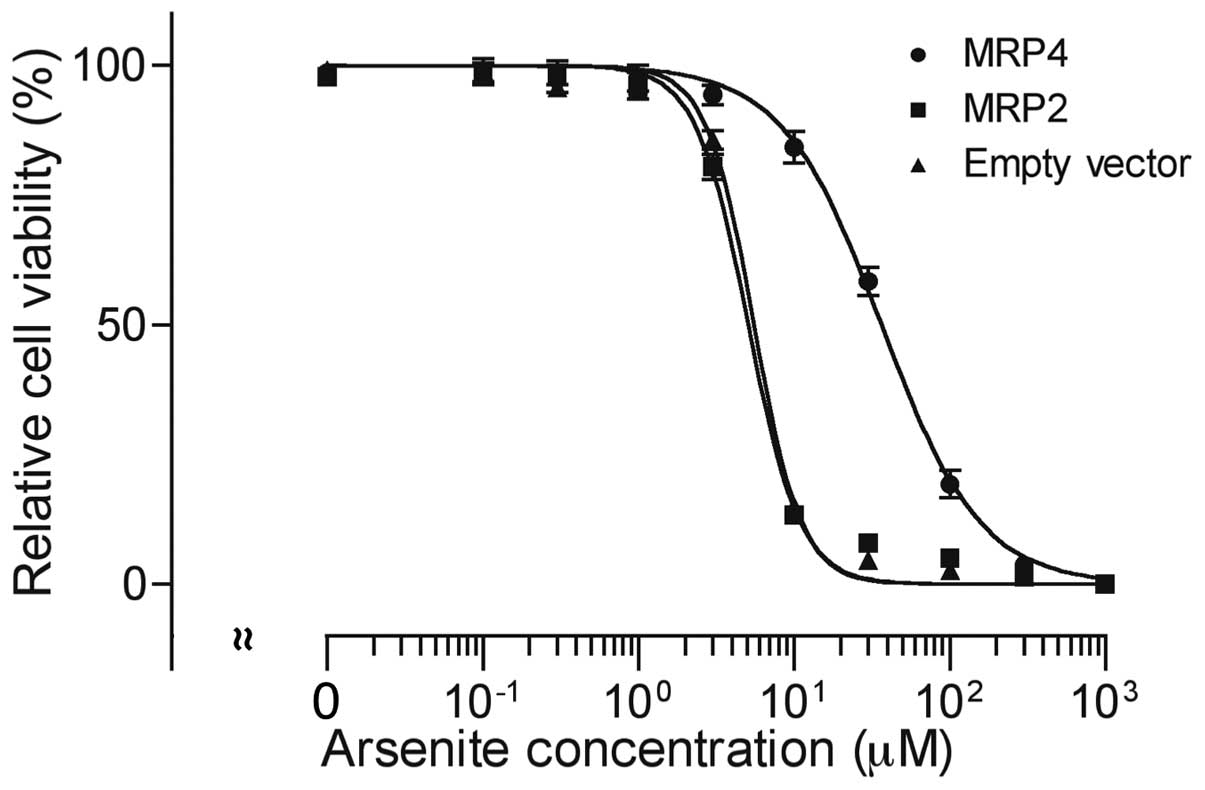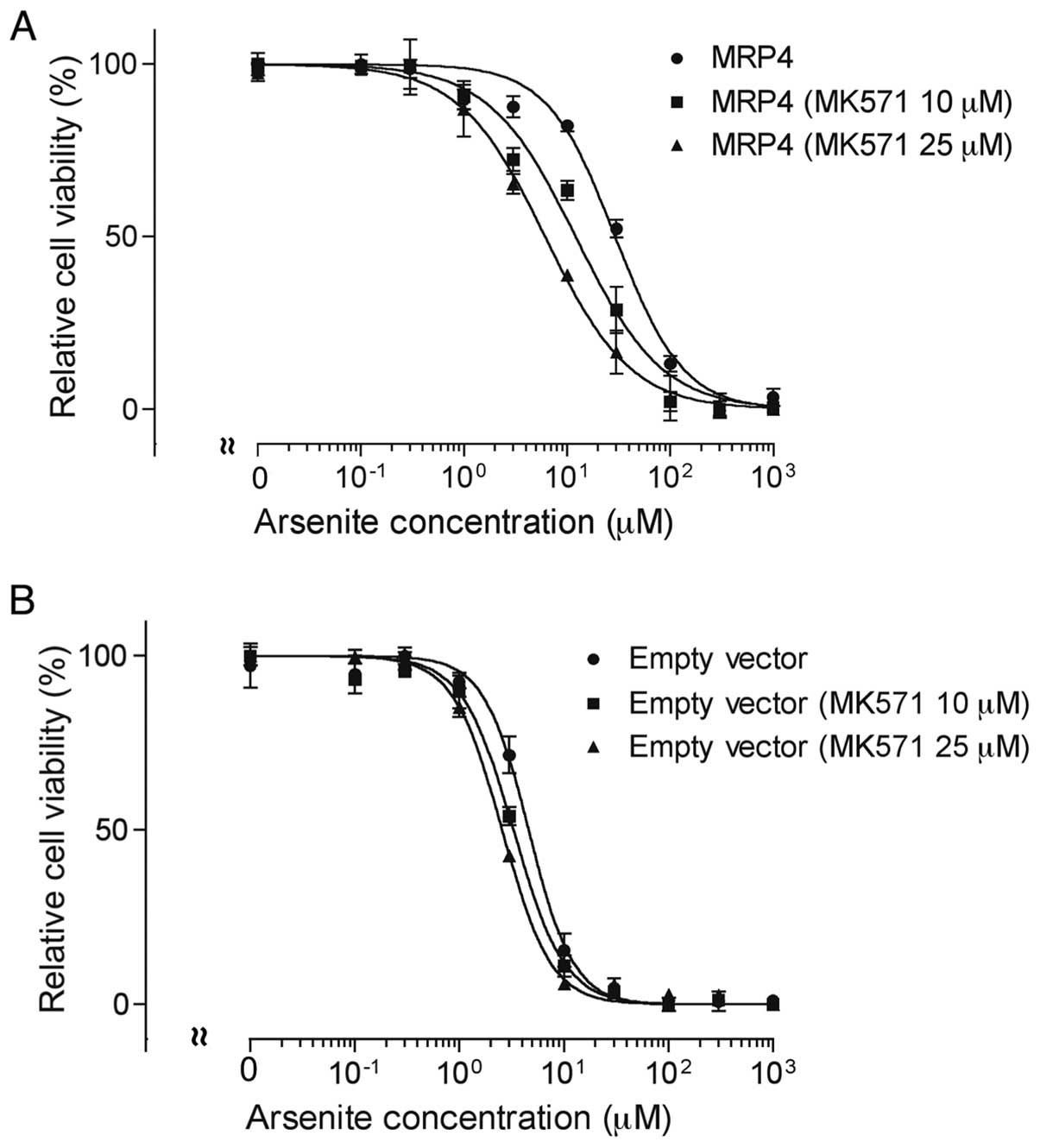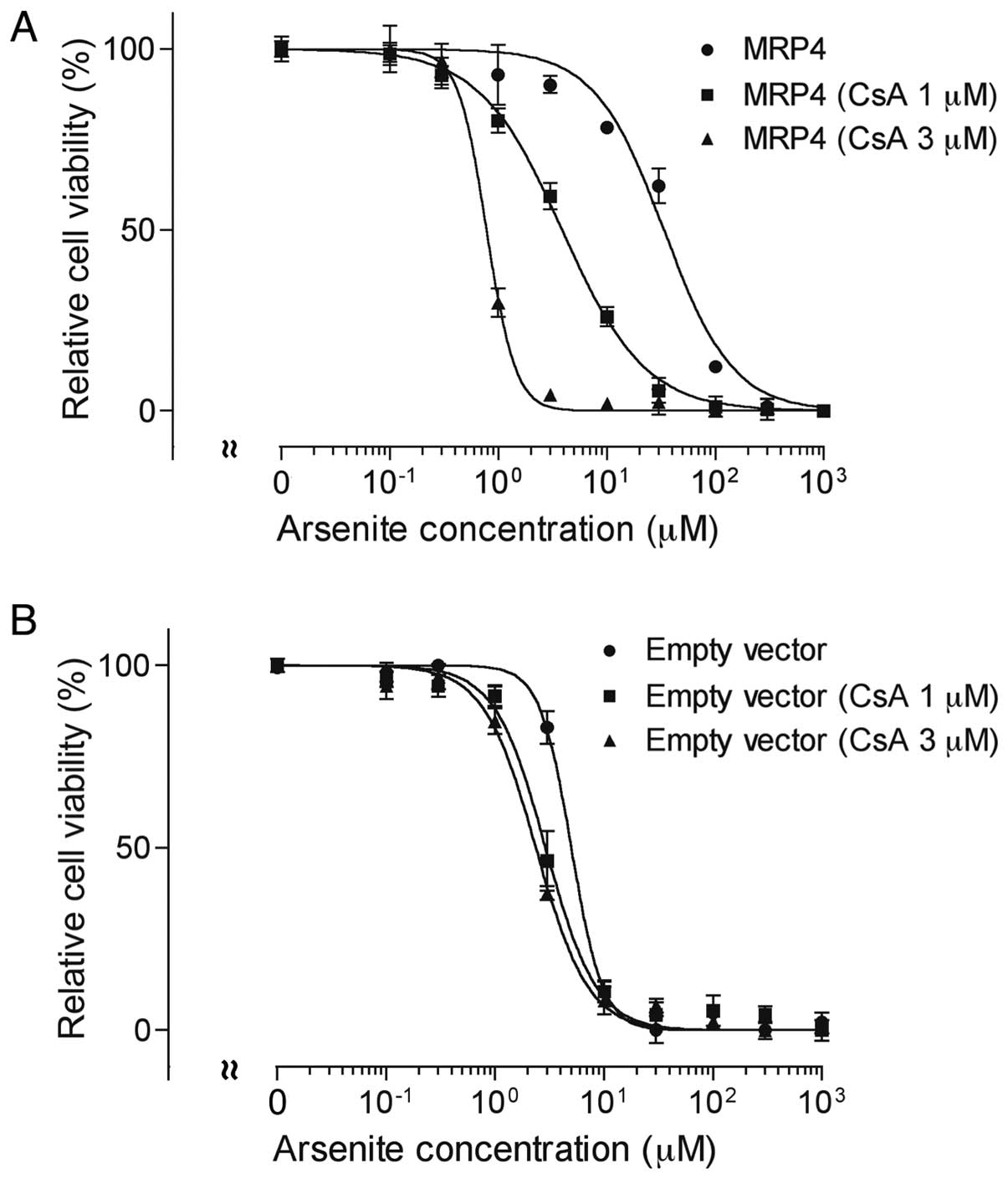|
1
|
Yuan B, Yoshino Y, Kaise T and Toyoda H:
Application of arsenic trioxide therapy for patients with leukemia.
Biological Chemistry of Arsenic, Antimony and Bismuth. Sun H: John
Wiley and Sons, Ltd; Chichester: pp. 263–292. 2011
|
|
2
|
Cohen MH, Hirschfeld S, Flamm Honig S,
Ibrahim A, Johnson JR, O'Leary JJ, White RM, Williams GA and Pazdur
R: Drug approval summaries: Arsenic trioxide, tamoxifen citrate,
anastrazole, paclitaxel, bexarotene. Oncologist. 6:4–11. 2001.
View Article : Google Scholar : PubMed/NCBI
|
|
3
|
Shen ZX, Chen GQ, Ni JH, Li XS, Xiong SM,
Qiu QY, Zhu J, Tang W, Sun GL, Yang KQ, et al: Use of arsenic
trioxide (As2O3) in the treatment of acute
promyelocytic leukemia (APL): II. Clinical efficacy and
pharmacokinetics in relapsed patients. Blood. 89:3354–3360.
1997.PubMed/NCBI
|
|
4
|
Soignet SL, Maslak P, Wang ZG, Jhanwar S,
Calleja E, Dardashti LJ, Corso D, DeBlasio A, Gabrilove J,
Scheinberg DA, et al: Complete remission after treatment of acute
promyelocytic leukemia with arsenic trioxide. N Engl J Med.
339:1341–1348. 1998. View Article : Google Scholar : PubMed/NCBI
|
|
5
|
Fujisawa S, Ohno R, Shigeno K, Sahara N,
Nakamura S, Naito K, Kobayashi M, Shinjo K, Takeshita A, Suzuki Y,
et al: Pharmacokinetics of arsenic species in Japanese patients
with relapsed or refractory acute promyelocytic leukemia treated
with arsenic trioxide. Cancer Chemother Pharmacol. 59:485–493.
2007. View Article : Google Scholar
|
|
6
|
Kiguchi T, Yoshino Y, Yuan B, Yoshizawa S,
Kitahara T, Akahane D, Gotoh M, Kaise T, Toyoda H and Ohyashiki K:
Speciation of arsenic trioxide penetrates into cerebrospinal fluid
in patients with acute promyelocytic leukemia. Leuk Res.
34:403–405. 2010. View Article : Google Scholar
|
|
7
|
Yoshino Y, Yuan B, Miyashita SI, Iriyama
N, Horikoshi A, Shikino O, Toyoda H and Kaise T: Speciation of
arsenic trioxide metabolites in blood cells and plasma of a patient
with acute promyelocytic leukemia. Anal Bioanal Chem. 393:689–697.
2009. View Article : Google Scholar
|
|
8
|
Iriyama N, Yoshino Y, Yuan B, Horikoshi A,
Hirabayashi Y, Hatta Y, Toyoda H and Takeuchi J: Speciation of
arsenic trioxide metabolites in peripheral blood and bone marrow
from an acute promyelocytic leukemia patient. J Hematol Oncol.
5:12012. View Article : Google Scholar : PubMed/NCBI
|
|
9
|
Chen GQ, Shi XG, Tang W, Xiong SM, Zhu J,
Cai X, Han ZG, Ni JH, Shi GY, Jia PM, et al: Use of arsenic
trioxide (As2O3) in the treatment of acute
promyelocytic leukemia (APL): I. As2O3 exerts
dose-dependent dual effects on APL cells. Blood. 89:3345–3353.
1997.PubMed/NCBI
|
|
10
|
Morjani H and Madoulet C:
Immunosuppressors as multidrug resistance reversal agents. Methods
Mol Biol. 596:433–446. 2010. View Article : Google Scholar
|
|
11
|
Lee TC, Ho IC, Lu WJ and Huang JD:
Enhanced expression of multidrug resistance-associated protein 2
and reduced expression of aquaglyceroporin 3 in an
arsenic-resistant human cell line. J Biol Chem. 281:18401–18407.
2006. View Article : Google Scholar : PubMed/NCBI
|
|
12
|
Leslie EM, Haimeur A and Waalkes MP:
Arsenic transport by the human multidrug resistance protein 1
(MRP1/ABCC1). Evidence that a tri-glutathione conjugate is
required. J Biol Chem. 279:32700–32708. 2004. View Article : Google Scholar : PubMed/NCBI
|
|
13
|
Bhattacharjee H, Carbrey J, Rosen BP and
Mukhopadhyay R: Drug uptake and pharmacological modulation of drug
sensitivity in leukemia by AQP9. Biochem Biophys Res Commun.
322:836–841. 2004. View Article : Google Scholar : PubMed/NCBI
|
|
14
|
Yoshino Y, Yuan B, Kaise T, Takeichi M,
Tanaka S, Hirano T, Kroetz DL and Toyoda H: Contribution of
aquaporin 9 and multidrug resistance-associated protein 2 to
differential sensitivity to arsenite between primary cultured
chorion and amnion cells prepared from human fetal membranes.
Toxicol Appl Pharmacol. 257:198–208. 2011. View Article : Google Scholar : PubMed/NCBI
|
|
15
|
Iriyama N, Yuan B, Yoshino Y, Hatta Y,
Horikoshi A, Aizawa S, Takeuchi J and Toyoda H: Aquaporin 9, a
promising predictor for the cytocidal effects of arsenic trioxide
in acute promyelocytic leukemia cell lines and primary blasts.
Oncol Rep. 29:2362–2368. 2013.PubMed/NCBI
|
|
16
|
Yuan B, Ohyama K, Bessho T and Toyoda H:
Contribution of inducible nitric oxide synthase and
cyclooxygenase-2 to apoptosis induction in smooth chorion
trophoblast cells of human fetal membrane tissues. Biochem Biophys
Res Commun. 341:822–827. 2006. View Article : Google Scholar : PubMed/NCBI
|
|
17
|
Yuan B, Ohyama K, Bessho T, Uchide N and
Toyoda H: Imbalance between ROS production and elimination results
in apoptosis induction in primary smooth chorion trophoblast cells
prepared from human fetal membrane tissues. Life Sci. 82:623–630.
2008. View Article : Google Scholar : PubMed/NCBI
|
|
18
|
Yuan B, Ohyama K, Takeichi M and Toyoda H:
Direct contribution of inducible nitric oxide synthase expression
to apoptosis induction in primary smooth chorion trophoblast cells
of human fetal membrane tissues. Int J Biochem Cell Biol.
41:1062–1069. 2009. View Article : Google Scholar
|
|
19
|
Abla N, Chinn LW, Nakamura T, Liu L, Huang
CC, Johns SJ, Kawamoto M, Stryke D, Taylor TR, Ferrin TE, et al:
The human multidrug resistance protein 4 (MRP4, ABCC4): Functional
analysis of a highly polymorphic gene. J Pharmacol Exp Ther.
325:859–868. 2008. View Article : Google Scholar : PubMed/NCBI
|
|
20
|
Kelly L, Fukushima H, Karchin R, Gow JM,
Chinn LW, Pieper U, Segal MR, Kroetz DL and Sali A: Functional hot
spots in human ATP-binding cassette transporter nucleotide binding
domains. Protein Sci. 19:2110–2121. 2010. View Article : Google Scholar : PubMed/NCBI
|
|
21
|
Russel FG, Koenderink JB and Masereeuw R:
Multidrug resistance protein 4 (MRP4/ABCC4): A versatile efflux
transporter for drugs and signalling molecules. Trends Pharmacol
Sci. 29:200–207. 2008. View Article : Google Scholar : PubMed/NCBI
|
|
22
|
Chen ZS, Lee K, Walther S, Raftogianis RB,
Kuwano M, Zeng H and Kruh GD: Analysis of methotrexate and folate
transport by multidrug resistance protein 4 (ABCC4): MRP4 is a
component of the methotrexate efflux system. Cancer Res.
62:3144–3150. 2002.PubMed/NCBI
|
|
23
|
Tian Q, Zhang J, Chan SY, Tan TM, Duan W,
Huang M, Zhu YZ, Chan E, Yu Q, Nie YQ, et al: Topotecan is a
substrate for multidrug resistance associated protein 4. Curr Drug
Metab. 7:105–118. 2006. View Article : Google Scholar : PubMed/NCBI
|
|
24
|
Tian Q, Zhang J, Tan TM, Chan E, Duan W,
Chan SY, Boelsterli UA, Ho PC, Yang H, Bian JS, et al: Human
multidrug resistance associated protein 4 confers resistance to
camptothecins. Pharm Res. 22:1837–1853. 2005. View Article : Google Scholar : PubMed/NCBI
|
|
25
|
Copsel S, Bruzzone A, May M, Beyrath J,
Wargon V, Cany J, Russel FG, Shayo C and Davio C: Multidrug
resistance protein 4/ATP binding cassette transporter 4: A new
potential therapeutic target for acute myeloid leukemia.
Oncotarget. 5:9308–9321. 2014. View Article : Google Scholar : PubMed/NCBI
|
|
26
|
Oevermann L, Scheitz J, Starke K, Köck K,
Kiefer T, Dölken G, Niessen J, Greinacher A, Siegmund W, Zygmunt M,
et al: Hematopoietic stem cell differentiation affects expression
and function of MRP4 (ABCC4), a transport protein for signaling
molecules and drugs. Int J Cancer. 124:2303–2311. 2009. View Article : Google Scholar : PubMed/NCBI
|
|
27
|
Banerjee M, Carew MW, Roggenbeck BA,
Whitlock BD, Naranmandura H, Le XC and Leslie EM: A novel pathway
for arsenic elimination: Human multidrug resistance protein 4
(MRP4/ABCC4) mediates cellular export of dimethylarsinic acid
(DMAV) and the diglutathione conjugate of monomethylarsonous acid
(MMAIII). Mol Pharmacol. 86:168–179. 2014. View Article : Google Scholar : PubMed/NCBI
|
|
28
|
Lee K, Klein-Szanto AJ and Kruh GD:
Analysis of the MRP4 drug resistance profile in transfected NIH3T3
cells. J Natl Cancer Inst. 92:1934–1940. 2000. View Article : Google Scholar : PubMed/NCBI
|
|
29
|
Lee G and Piquette-Miller M: Influence of
IL-6 on MDR and MRP-mediated multidrug resistance in human hepatoma
cells. Can J Physiol Pharmacol. 79:876–884. 2001. View Article : Google Scholar : PubMed/NCBI
|
|
30
|
Schuetz JD, Connelly MC, Sun D, Paibir SG,
Flynn PM, Srinivas RV, Kumar A and Fridland A: MRP4: A previously
unidentified factor in resistance to nucleoside-based antiviral
drugs. Nat Med. 5:1048–1051. 1999. View
Article : Google Scholar : PubMed/NCBI
|
|
31
|
Kikuchi H, Yuan B, Yuhara E, Imai M,
Furutani R, Fukushima S, Hazama S, Hirobe C, Ohyama K, Takagi N, et
al: Involvement of histone H3 phosphorylation via the activation of
p38 MAPK pathway and intracellular redox status in cytotoxicity of
HL-60 cells induced by Vitex agnus-castus fruit extract. Int J
Oncol. 45:843–852. 2014.PubMed/NCBI
|
|
32
|
Carew MW and Leslie EM: Selenium-dependent
and -independent transport of arsenic by the human multidrug
resistance protein 2 (MRP2/ABCC2): Implications for the mutual
detoxification of arsenic and selenium. Carcinogenesis.
31:1450–1455. 2010. View Article : Google Scholar : PubMed/NCBI
|
|
33
|
Kala SV, Neely MW, Kala G, Prater CI,
Atwood DW, Rice JS and Lieberman MW: The MRP2/cMOAT transporter and
arsenic-glutathione complex formation are required for biliary
excretion of arsenic. J Biol Chem. 275:33404–33408. 2000.
View Article : Google Scholar : PubMed/NCBI
|
|
34
|
Copsel S, Garcia C, Diez F, Vermeulem M,
Baldi A, Bianciotti LG, Russel FG, Shayo C and Davio C: Multidrug
resistance protein 4 (MRP4/ABCC4) regulates cAMP cellular levels
and controls human leukemia cell proliferation and differentiation.
J Biol Chem. 286:6979–6988. 2011. View Article : Google Scholar : PubMed/NCBI
|
|
35
|
Zhao Q, Tao J, Zhu Q, Jia PM, Dou AX, Li
X, Cheng F, Waxman S, Chen GQ, Chen SJ, et al: Rapid induction of
cAMP/PKA pathway during retinoic acid-induced acute promyelocytic
leukemia cell differentiation. Leukemia. 18:285–292. 2004.
View Article : Google Scholar
|
|
36
|
Zhu Q, Zhang JW, Zhu HQ, Shen YL, Flexor
M, Jia PM, Yu Y, Cai X, Waxman S, Lanotte M, et al: Synergic
effects of arsenic trioxide and cAMP during acute promyelocytic
leukemia cell maturation subtends a novel signaling cross-talk.
Blood. 99:1014–1022. 2002.PubMed/NCBI
|















